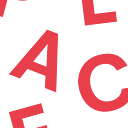Feeling our way in the dark
Authors: Alice Evans and Habiba Nabatu, January 2019
At Lankelly Chase, we understand that our work is rooted in complex systems and that we are all part of these systems. It has been a liberating realisation that we too are part of the systems we’re trying to change. We have learned to give up any notion of being an objective observer that can sit outside any particular system pronouncing on how it needs to change. We now acknowledge that we are participants who are learning and taking action alongside our partners.
As part of this way of working, we have engaged with a Toby Lowe and Max French from Newcastle University as our learning partners to support us as we collectively learn, act and reiterate. In this blog, we reflect on the insights and observations from their public report. Like all perspectives, ours is a limited view of the underlying complexity. It isn’t meant to be the complete picture but rather insights, emerging patterns as we see them.
The first thing to reflect on is the issue of control and uncertainty. Toby and Max note that uncertainty is a recurring theme, asking ‘How can the anxieties around this be managed? How can living with uncertainty be made ok?’
This uncertainty has shown up a lot around roles. We, along with our learning partner, associates and actors in place, have felt uncertain about the boundaries of our roles and what our individual practice should be. What is Habiba’s role? What is Alice’s role? What role is the local authority playing? What role is the director of different public services playing? What role is an associate playing? Where is the community in all of this?
It has caused anxiety for some people. To us, the confusion and uncertainty about roles has made something visible that is often invisible. There are some formal visible roles where we can create boundaries, and then the inner roles of the peacemaker, nurturer and analyst etc. that are fluid and shift around. The idea that each person is able to have a clearly defined role, neatly delineated in relation to another person’s role is not realistic. Understanding how to navigate and hold this complexity and nuance around roles is something that feels critical to the health of any system. We don’t know the answer- we are feeling our way in the dark on this.
We accept and acknowledge complexity as an inevitable part of this work and rather than avoiding it or controlling it, we seek to embrace it. This means being alive to it daily. We feel like we are taking lessons in ‘how to take effective action in a world we don’t understand and cannot control’. There is no manual for creating healthy systems. The report hints at the kind of practices we can engage in — collectively seeing the system, nurturing the system and shaping behaviours.
The second thing to reflect on is that we can’t say what is making a positive difference or what is working- yet. We set out on the path knowing this, knowing that we would have to be patient and take heart from small steps and this report has served to underline this.
Instead, we can learn from and share actions or insights emerging out of small experiments that discard the rules creating barriers to relationships, dialogue with no predetermined outcomes or convenings around questions that matter locally. The report highlights the power of amplifying the voices of people with lived experience, revealing the perspectives of people from different parts of the system for collective sensemaking and creating a dialogue between different actors as pointers of what’s changing.
We live in a culture that values ‘action’ and ‘doing’, where collective sense-making is often not seen as action, it’s just talking. Yet making sense of our systems and collectively asking questions about how we got here, noticing and valuing the relationships that emerge when there’s a shared vision seem to be important.
Our third reflection is that it’s great to hear Toby and Max share that they have observed conflict in our inquiry and that it’s a normal part of the story of change. If it is not acknowledged and addressed, it can be corrosive to relationships and trust; however, as they say, conflict stirs things up and creates opportunities for change.
We’ve seen that conflict is not just about fractured relationships, but also because we have different worldviews and beliefs. For example, when we talk about addressing homelessness, for some people, it’s about public service reform while for others it’s about adverse childhood experiences and housing. Others have said that we need to address the economic system that causes poverty, while others want to focus on societal values and beliefs that create the economic system in the first place. This is just amongst people who agree that homelessness is a problem we should do something about.
We would say that everyone is right, because everything is connected and interacts with everything else. By taking the time to make explicit the assumptions and worldviews we hold, perhaps we can invite all those perspectives in the room and work with them (or even agree to park them) so that we can find a collective understanding about the way forward. To us that’s what embracing conflict looks like.
So where next? We are learning that working alongside our partners means that we have to negotiate roles, engage in the sense-making and collectively act, reflect and reiterate. So the focus of our work in the next year is to continue to support creative spaces that allow people to get together and mutually learn about and explore their systems.
